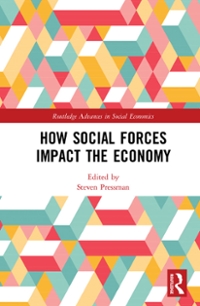I need help! This is due in 3 hours and I would really like to know how and what to do on this assignment.
Thank you!
Using the attached data from figures 8.3 (page 85) and 8.4 (page 86) to answer the following questions. For extra assistance, the text on those pages may come in handy as well. 1. The quantity of butter demanded is at the market equilibrium but increases / decreases to when a price floor is imposed at $1.20. 2. The quantity of butter supplied is at the market equilibrium but increases / decreases to when a price floor is imposed at $1.20. 3. With a price floor of $1.20, the quantity of apartments demanded is greater than / less than the quantity of apartments supplied, leading to a surplus / shortage of apartments. 4. The quantity of butter demanded is at the market equilibrium and when a price floor is imposed at $.80Now suppose that the government, in order to help dairy farmers, imposes a price floor on butter of $1.20 per pound. Its effects are shown in Figure 8.4, where the line at $1.20 represents the price floor. At a price of $1.20 per pound, producers would want to supply 12 million pounds (point Bon the supply curve) but consumers would want to buy only 9 million pounds (point A on the demand curve). So the price floor leads to a persistent surplus of 3 million pounds of butter. Price of butter (per pound) Butter surplus of $1.40 S 3 million pounds caused by price floor 1.20 A B Price E 1.00 floor 0.80 0.60 9 10 12 14 Quantity of butter (millions of pounds) Anderson/Ray, Krugman's Macroeconomics for the AP Course, 3e, 2019 Worth Publishers Figure 8.4 The Effects of a Price FloorJust like price ceilings, price floors are intended to help some people but generate predictable and undesirable side effects. Figure 8.3 shows hypothetical supply and demand curves for butter. Left to itself, the market would move to equilibrium at point E, with 10 million pounds of butter bought and sold at a price of $1 per pound. Price of butter (per pound) Quantity of butter (millions of pounds] $1.40 Price of butter Quantity Quantity (per pound) demanded supplied 1.30 $1.40 8.0 14.0 1.20 1.30 8.5 13.0 1.10 1.20 9.0 12.0 1.00 1.10 9.5 11.0 1.00 10.0 10.0 0.90 0.90 10.5 9.0 0.80 0.80 11.0 8.0 0.70 11.5 0.70 7.0 0.60 12.0 6.0 0.60 D 6 7 8 9 10 11 12 13 14 Quantity of butter (millions of pounds) Anderson/Ray, Krugman's Macroeconomics for the AP Course, 3e, @ 2019 Worth Publishers Figure 8.3 The Market for Butter in the Absence of Government Controls Without government intervention, the market for butter reaches equilibrium at a price of $1 per pound with 10 million pounds of butter bought and sold









